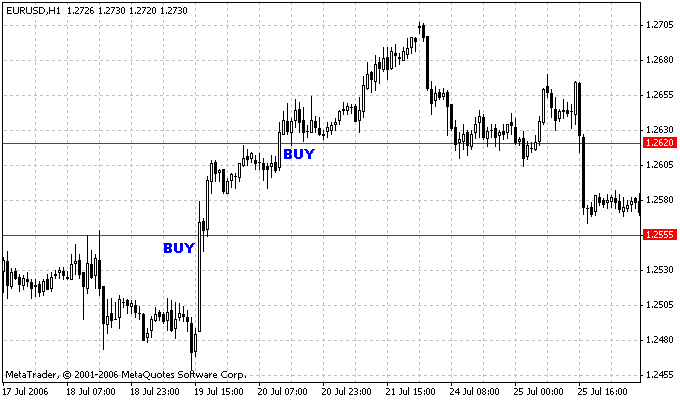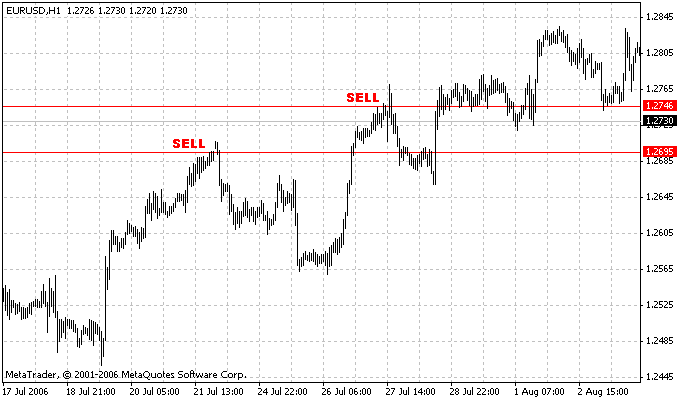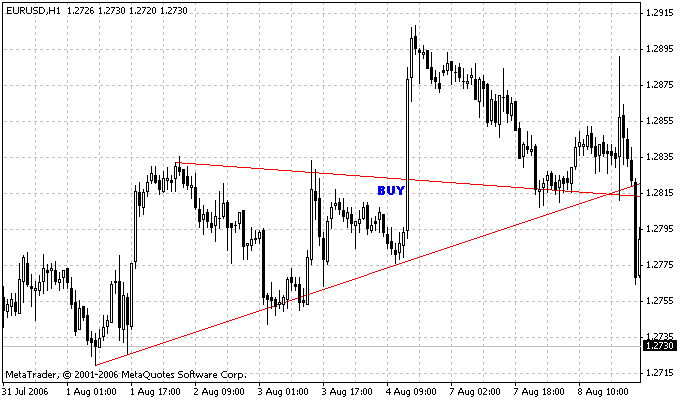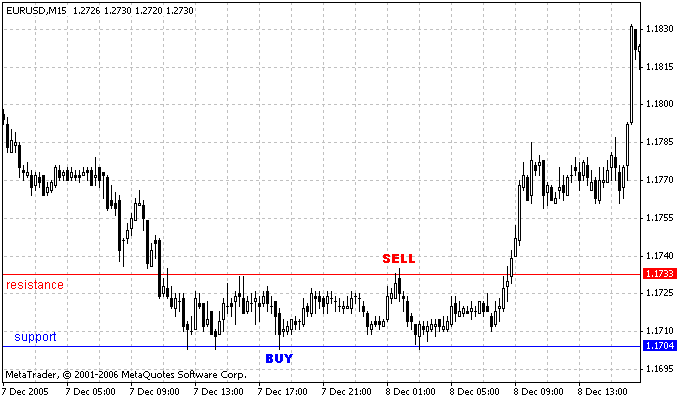Trading Strategies
Collector | 17 October, 2006
All categories classifying trading strategies are fully arbitrary. The classification below is to emphasize the basic differences between possible approaches to trading.
- Following the trend
The following-the-trend strategy lies in waiting for a certain price movement followed by opening a position in the same direction. Doing so, one supposes that the trend will keep moving in the same direction. When following the trend, one never sells near maximum or buy near minimum since a significant price movement is needed to signal that the trend has started. So, using systems of this type, the trader will always skip the first phase of the price movement and can miss significant part of profit before the signal to close position comes. The main issue concerns choice of sensitivity of the trend-following strategy. A sensitive system that quickly responds to signs of trend change work more efficiently during strong trends, but generate much more false signals. A non-sensitive system will have a reverse set of characteristics.
Many traders try again and again to earn money on every movement of the market. This results in choosing of faster and faster systems following the trend. Although on some markets quick systems are usually more efficient than slow ones, on the most markets it is quite opposite since minimizing of losing trades and commissions in slower systems more than pays the reduced profits at good trades. This is why it is recommended to limit the natural effort to search for more sensitive systems. In all cases, the choice between quick and slow systems should be based on experiences and individual intentions of the trader. There is a great variety of trend-following strategies available.
Below are the main strategies of the kind:
-
Strategies based on moving average
When an up-trend is replaced with the down-trend, prices must intersect the moving average top-down. Similarly, when the down-trend is replaced with the up-trend, prices must intersect the moving average bottom-up. In the most moving-average systems, these cross points are considered as trade signals.
Break-through strategy
The basic conception underlying the break-through strategy is rather simple: the market ability to reach a new maximum or minimum shows potential trend in the breakthrough direction.
-
- Against-the-trend strategies
Against-the-trend strategies are based on waiting for a significant price movement followed by opening a position in the opposite direction, assuming that the market will start correction. Systems working against the trend are often attractive for many traders since they are aimed at buying at minimum and selling at maximum. Unfortunately, the solving complexity of this task is inversely proportional to attraction of such systems. The most important difference to be remembered is that the trend-following systems are self-correcting and against-the-trend systems implicate possibility of unlimited losses. Thus, it is necessary to include protecting stops in any against-the-trend system. Otherwise, the system may keep a long position during the entire large-scaled down-trend or a short position during the entire large-scaled up-trend.
The prime advantage of against-the-trend systems consists in that they give a great diversification opportunity when simultaneously used together with trend-following systems. Related to this, it must be noted that an against-the-trend system can be desirable if even it loses money moderately. The reason for this is that, if an against-the-trend system is oppositely correlated with a trend-following system, trading with both systems bears fewer risks than trading with only one of them. Thus, it is highly possible that combination of these two systems can earn more at the same risk level if even the against-the-trend system itself loses money.

- Model recognition of price behavior
All systems can, in some sense, be classified as systems of model recognition. Finally, conditions that give a signal to open position in or against the trend direction are a kind of price models, too. Neverthless, this means that the chosen models are not primarily based on price movements in certain directions as it is in case of trend-following or against-the-trend systems.
Systems of this type can sometimes use probable models when making trade decisions. In this case, researchers will try to identify models that, according to their behavior, were supposed to precede price increases or decreases. Such behavior models are considered to be used for assessment of the current probabilities of the market growth or fall.
It must be noted that the above strategies are not always clearly separated from each other. Being modified, the systems can be classified as of another type.

- Trading in channel
Trading in channel represents trading up and down from resistance/support levels, lines of which are the channel borders. Such tactics are good for sideways trends (flats), but are not practically applicable in up-trends or down-trends. Trading in channel is shown in a chart below:

Positions should be opened under the following rules:
- Determine support/resistance levels. A correct computation will
help to have clear borders of the channel, in which the market moves.
- As
soon as the price reaches a border of the channel and jumps back in the
opposite direction, a buy position should be opened. Short positions
should be opened if prices reach the resistance level.
- As
soon as the price reaches the opposite border, the position should be
closed. It must be noted that reversal can happen before the price line
reaches the channel borders, so positions can be closed before the
price reaches levels of support or resistance.
The advantage of such tactics is possible maximization of profit through opening and closing of positions several times if the sideways trend continues. The main disadvantage thereof is that the break thourgh the channel lines can result in significant and undjustified losses. To avoid the latter ones, it is necessary to set Stop Loss correctly that losing positions are closed if the market moves in an opposite direction compared to the planned one.
- Determine support/resistance levels. A correct computation will
help to have clear borders of the channel, in which the market moves.